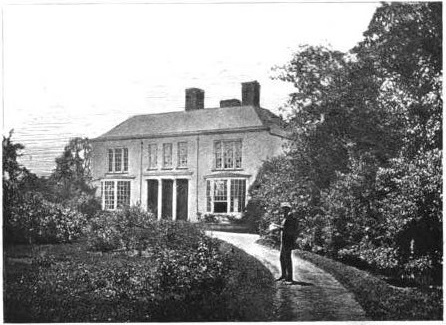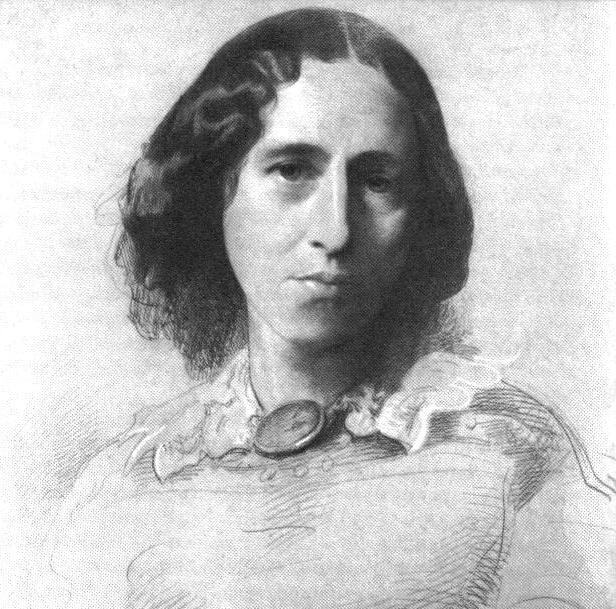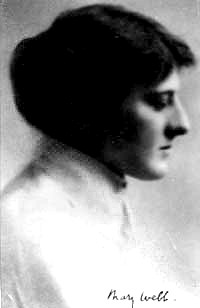|
British Regional Literature
In literature regionalism refers to fiction or poetry that focuses on specific features, such as dialect, customs, history, and landscape, of a particular region (also called "local colour"). The setting is particularly important in regional literature and the "locale is likely to be rural and/or provincial." Development Novelists Thomas Hardy's (1840–1928) novels can be described as regional because of the way he makes use of these elements in relation to a part of the West of England, that he names Wessex. On the other hand, it seems much less appropriate to describe Charles Dickens (1812–1870) as a regional novelist of London and the south of England. John Cowper Powys has been seen as a successor to Thomas Hardy, and ''Wolf Solent'', ''A Glastonbury Romance'' (1932), along with ''Weymouth Sands'' (1934) and '' Maiden Castle'' (1936), are often referred to as his Wessex novels. As with Hardy's novels, the landscape plays a major role in Powys's works, and an elemental ph ... [...More Info...] [...Related Items...] OR: [Wikipedia] [Google] [Baidu] |
Wessex
la, Regnum Occidentalium Saxonum , conventional_long_name = Kingdom of the West Saxons , common_name = Wessex , image_map = Southern British Isles 9th century.svg , map_caption = Southern Britain in the ninth century , event_start = Established , year_start = 519 , event_end = English unification , year_end = 12 July 927 , event1 = , date_event1 = , event_pre = Settlement , date_pre = 5th–6th century , event_post = Norman conquest , date_post = 14 October 1066 , border_s2 = no , common_languages = Old English *West Saxon dialect British Latin , religion = PaganismChristianity , leader1 = Cerdic (first) , leader2 = Ine , leader3 = Ecgberht , leader4 = Alfred the Great , leader5 ... [...More Info...] [...Related Items...] OR: [Wikipedia] [Google] [Baidu] |
Maria Edgeworth
Maria Edgeworth (1 January 1768 – 22 May 1849) was a prolific Anglo-Irish novelist of adults' and children's literature. She was one of the first realist writers in children's literature and was a significant figure in the evolution of the novel in Europe. She held views on estate management, politics and education, and corresponded with some of the leading literary and economic writers, including Sir Walter Scott and David Ricardo. Life Early life Maria Edgeworth was born at Black Bourton, Oxfordshire. She was the second child of Richard Lovell Edgeworth (who eventually fathered 19 children by four wives) and Anna Maria Edgeworth (''née'' Elers); Maria was thus an aunt of Francis Ysidro Edgeworth. She spent her early years with her mother's family in England, living at The Limes (now known as Edgeworth House) in Northchurch, by Berkhamsted in Hertfordshire. Her mother died when Maria was five, and when her father married his second wife Honora Sneyd in 1773, she went with ... [...More Info...] [...Related Items...] OR: [Wikipedia] [Google] [Baidu] |
Staffordshire
Staffordshire (; postal abbreviation Staffs.) is a landlocked county in the West Midlands region of England. It borders Cheshire to the northwest, Derbyshire and Leicestershire to the east, Warwickshire to the southeast, the West Midlands County and Worcestershire to the south and Shropshire to the west. The largest settlement in Staffordshire is Stoke-on-Trent, which is administered as an independent unitary authority, separately from the rest of the county. Lichfield is a cathedral city. Other major settlements include Stafford, Burton upon Trent, Cannock, Newcastle-under-Lyme, Rugeley, Leek, and Tamworth. Other towns include Stone, Cheadle, Uttoxeter, Hednesford, Brewood, Burntwood/Chasetown, Kidsgrove, Eccleshall, Biddulph and the large villages of Penkridge, Wombourne, Perton, Kinver, Codsall, Tutbury, Alrewas, Barton-under-Needwood, Shenstone, Featherstone, Essington, Stretton and Abbots Bromley. Cannock Chase AONB is within the county as well as parts of the ... [...More Info...] [...Related Items...] OR: [Wikipedia] [Google] [Baidu] |
Staffordshire Potteries
The Staffordshire Potteries is the industrial area encompassing the six towns Burslem, Fenton, Hanley, Longton, Stoke and Tunstall, which is now the city of Stoke-on-Trent in Staffordshire, England. North Staffordshire became a centre of ceramic production in the early 17th century, Fleming, John & Hugh Honour. (1977) ''The Penguin Dictionary of Decorative Arts. '' London: Allen Lane, p. 752. due to the local availability of clay, salt, lead and coal. Spread Hundreds of companies produced all kinds of pottery, from tablewares and decorative pieces to industrial items. The main pottery types of earthenware, stoneware and porcelain were all made in large quantities, and the Staffordshire industry was a major innovator in developing new varieties of ceramic bodies such as bone china and jasperware, as well as pioneering transfer printing and other glazing and decorating techniques. In general Staffordshire was strongest in the middle and low price ranges, though the finest an ... [...More Info...] [...Related Items...] OR: [Wikipedia] [Google] [Baidu] |
Arnold Bennett
Enoch Arnold Bennett (27 May 1867 – 27 March 1931) was an English author, best known as a novelist. He wrote prolifically: between the 1890s and the 1930s he completed 34 novels, seven volumes of short stories, 13 plays (some in collaboration with other writers), and a daily journal totalling more than a million words. He wrote articles and stories for more than 100 newspapers and periodicals, worked in and briefly ran the Ministry of Information in the First World War, and wrote for the cinema in the 1920s. The sales of his books were substantial, and he was the most financially successful British author of his day. Born into a modest but upwardly mobile family in Hanley, in the Staffordshire Potteries, Bennett was intended by his father, a solicitor, to follow him into the legal profession. Bennett worked for his father, before moving to another law firm in London as a clerk, aged 21. He became assistant editor and then editor of a women's magazine, before becoming a ful ... [...More Info...] [...Related Items...] OR: [Wikipedia] [Google] [Baidu] |
George Eliot
Mary Ann Evans (22 November 1819 – 22 December 1880; alternatively Mary Anne or Marian), known by her pen name George Eliot, was an English novelist, poet, journalist, translator, and one of the leading writers of the Victorian era. She wrote seven novels: ''Adam Bede'' (1859), ''The Mill on the Floss'' (1860), ''Silas Marner'' (1861), ''Romola'' (1862–63), ''Felix Holt, the Radical'' (1866), ''Middlemarch'' (1871–72) and '' Daniel Deronda'' (1876). Like Charles Dickens and Thomas Hardy, she emerged from provincial England; most of her works are set there. Her works are known for their realism, psychological insight, sense of place and detailed depiction of the countryside. ''Middlemarch'' was described by the novelist Virginia Woolf as "one of the few English novels written for grown-up people"Woolf, Virginia. "George Eliot." ''The Common Reader''. New York: Harcourt, Brace, and World, 1925. pp. 166–76. and by Martin Amis and Julian Barnes as the greatest novel in ... [...More Info...] [...Related Items...] OR: [Wikipedia] [Google] [Baidu] |
Geraint Goodwin
Arthur Geraint Goodwin (1 May 1903 – 10 October 1941) was a Welsh literature in English, Welsh journalist, novelist and short story writer from near Newtown, Montgomeryshire, who wrote about rural life on the Welsh border. His first novel, published in 1935, was the autobiographical ''Call Back Yesterday''. Goodwin's most acclaimed work, ''The Heyday in the Blood,'' appeared in 1936, and his last novel, ''Come Michaelmas,'' appeared in 1939. In 1975, ''The Heyday in the Blood'' was translated into Welsh. Biography He was born in the village of Llanllwchaearn, on the outskirts of Newtown, Montgomeryshire, the son of Richard Goodwin (1862–1911) and Mary Jane (Watkin, née Lewis) Goodwin (1862–1943). His father died when he was eight, and his mother married the almost twenty years younger Frank Humphreys when he was twelve. This marriage was his mother's third and Humphreys' second. Goodwin apparently got on well with his stepfather, and Frank Humphreys', and his mother's, love ... [...More Info...] [...Related Items...] OR: [Wikipedia] [Google] [Baidu] |
Margiad Evans
Margiad Evans was the pseudonym of Peggy Eileen Whistler (17 March 1909 – 17 March 1958), an English poet, novelist and illustrator with a lifelong identification with the Welsh border country.Ceridwen Lloyd-Morgan: 'Williams , Peggy Eileen argiad Evans(1909–1958)’. Oxford Dictionary of National Biography (Oxford: Oxford University Press, May 2010retrieved 1 July 2010 Life and works Evans was born Peggy Whistler in Uxbridge, Middlesex, the daughter of Godfrey James Whistler (1866–1936), an insurance clerk. Her affection for the Herefordshire countryside grew from visits she began to pay in 1918 to an aunt in Ross-on-Wye. The family moved to nearby Bridstow in 1921. She was educated in Ross and at Hereford School of Art. She took her pen name from her father's mother, whose name was Evans. Her two most famous works are ''Country Dance'' (1932) and her ''Autobiography'' (1943, 2nd edn, 1952). ''Country Dance'' (serialized on BBC radio in 2006) was followed by three furth ... [...More Info...] [...Related Items...] OR: [Wikipedia] [Google] [Baidu] |
Mary Webb
Mary Gladys Webb (25 March 1881 – 8 October 1927) was an English Romance (literary fiction), romance novelist and poet of the early 20th century, whose work is set chiefly in the Shropshire countryside and among Shropshire characters and people whom she knew. Her novels have been successfully dramatized, most notably the film ''Gone to Earth (film), Gone to Earth'' in 1950 by Michael Powell and Emeric Pressburger based on the Gone to Earth (novel), novel of the same title. The novels are thought to have inspired the famous parody ''Cold Comfort Farm'' (1932) by Stella Gibbons. Life She was born Mary Gladys Meredith in 1881 at Leighton Lodge in the Shropshire village of Leighton and Eaton Constantine, Leighton, where she was baptised at Leighton_and_Eaton_Constantine#St_Mary's_Church, St Mary's parish church, 8 miles (13 km) southeast of Shrewsbury. Her father, George Edward Meredith, a private schoolteacher, inspired his daughter with his own love of literature and ... [...More Info...] [...Related Items...] OR: [Wikipedia] [Google] [Baidu] |
Haworth
Haworth () is a village in the City of Bradford, West Yorkshire, England, in the Pennines, south-west of Keighley, west of Bradford and east of Colne in Lancashire. The surrounding areas include Oakworth and Oxenhope. Nearby villages include Cross Roads, Stanbury and Lumbfoot. Haworth is a tourist destination known for its association with the Brontë sisters and the preserved heritage Keighley and Worth Valley Railway. History Haworth is first mentioned as a settlement in 1209. The name may refer to a "hedged enclosure" or "hawthorn enclosure". The name was recorded as "Howorth" on a 1771 map. In 1850, local parish priest Patrick Brontë invited Benjamin Herschel Babbage to investigate the village's high early mortality rate, which had led to all but one of his six children, including the writers Emily and Anne Brontë, dying by the age of 31. Babbage's inspection uncovered deeply unsanitary conditions, including there being no sewers, excrement flowing down Haworth' ... [...More Info...] [...Related Items...] OR: [Wikipedia] [Google] [Baidu] |
Virginia Woolf
Adeline Virginia Woolf (; ; 25 January 1882 28 March 1941) was an English writer, considered one of the most important modernist 20th-century authors and a pioneer in the use of stream of consciousness as a narrative device. Woolf was born into an affluent household in South Kensington, London, the seventh child of Julia Prinsep Jackson and Leslie Stephen in a blended family of eight which included the modernist painter Vanessa Bell. She was home-schooled in English classics and Victorian literature from a young age. From 1897 to 1901, she attended the Ladies' Department of King's College London, where she studied classics and history and came into contact with early reformers of women's higher education and the women's rights movement. Encouraged by her father, Woolf began writing professionally in 1900. After her father's death in 1904, the Stephen family moved from Kensington to the more bohemian Bloomsbury, where, in conjunction with the brothers' intellectual friends, t ... [...More Info...] [...Related Items...] OR: [Wikipedia] [Google] [Baidu] |
West Yorkshire
West Yorkshire is a metropolitan and ceremonial county in the Yorkshire and Humber Region of England. It is an inland and upland county having eastward-draining valleys while taking in the moors of the Pennines. West Yorkshire came into existence as a metropolitan county in 1974 after the reorganisation of the Local Government Act 1972 which saw it formed from a large part of the West Riding of Yorkshire. The county had a recorded population of 2.3 million in the 2011 Census making it the fourth-largest by population in England. The largest towns are Huddersfield, Castleford, Batley, Bingley, Pontefract, Halifax, Brighouse, Keighley, Pudsey, Morley and Dewsbury. The three cities of West Yorkshire are Bradford, Leeds and Wakefield. West Yorkshire consists of five metropolitan boroughs (City of Bradford, Calderdale, Kirklees, City of Leeds and City of Wakefield); it is bordered by the counties of Derbyshire to the south, Greater Manchester to the south-west, Lancash ... [...More Info...] [...Related Items...] OR: [Wikipedia] [Google] [Baidu] |






